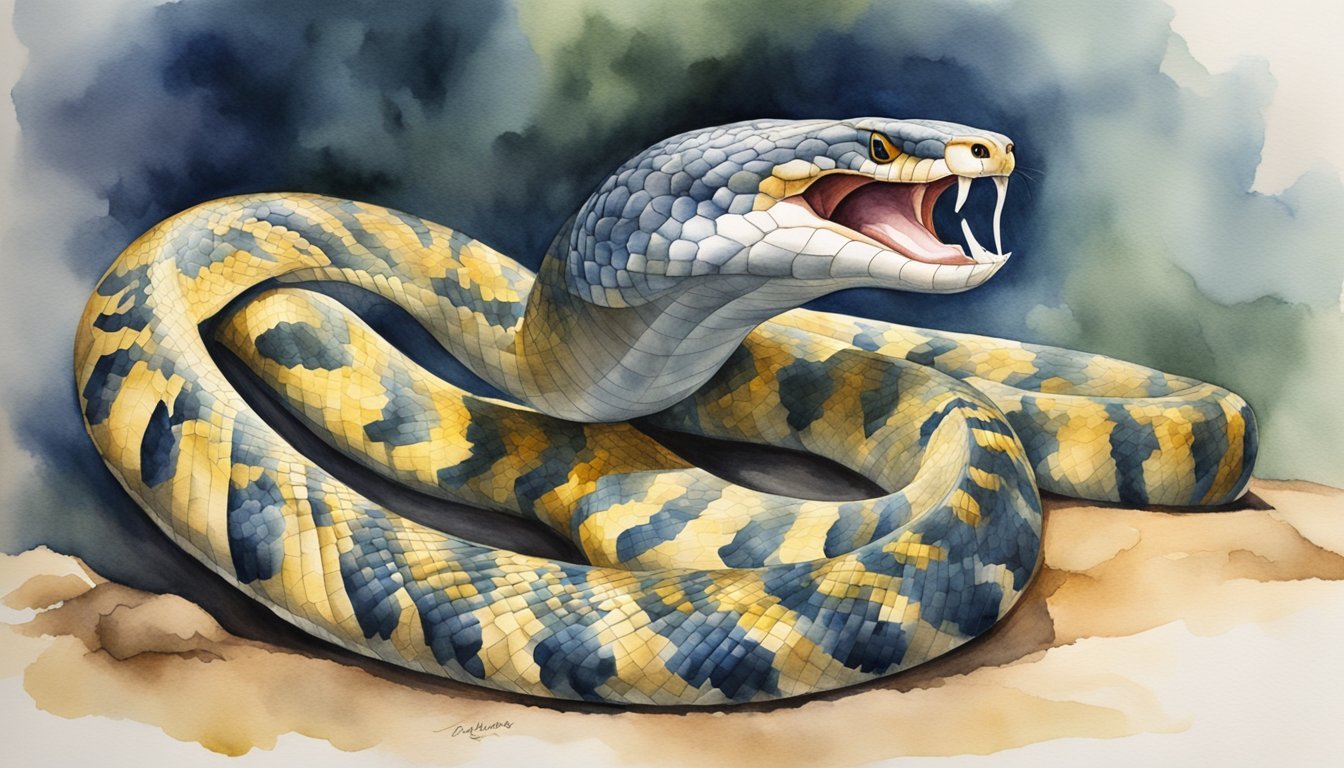King Cobra Overview
The king cobra is a highly venomous snake and one of the most renowned serpents worldwide. With a scientific name of Ophiophagus hannah, the species is noted for its impressive length and distinct features such as the hood and the ability to emit a hiss that can intimidate many.
Physical Characteristics
The king cobra is celebrated for being the world’s longest venomous snake, with sizes commonly ranging from 3.18 to 4 meters (10.4 to 13.1 feet), and some individuals even reaching lengths of up to 5.6 meters. The weight of an adult king cobra can be around 6 kilograms (13 pounds). Its scales exhibit variations in color including shades of yellow, brown, black, and even green, with patterns that are often dependent on its habitat. The hood, which is an extension of the neck rib bones, can be spread when the snake feels threatened or is displaying aggression.
Habitat and Distribution
King cobras are predominantly found in various regions across Asia, including Southeast Asia, East Asia, forests of India, Vietnam, China, Southern China, Indonesia, the Philippines, and Thailand. Their habitats are diverse, covering forests, bamboo thickets, mangrove swamps, and areas near streams. Despite their adaptability, king cobras have been classified as vulnerable on the IUCN Red List due to habitat destruction and other human-induced factors.
Diet and Prey
As a carnivore, the king cobra’s diet consists mainly of other snakes, including cobras, making it an ophiophagous species. Besides other serpents, it also hunts for lizards, small mammals, rodents, and birds. Known for its potent venom, a king cobra can immobilize and subsequently ingest its prey using its large fangs to deliver a deadly bite. The snake’s ability to sense chemical trails helps it locate food, be it on the ground or in trees.
Behavior and Threats

King cobras are known for their distinctive behavior and the various threats they face, primarily from human activities. Their unique defense mechanisms, reproduction processes, and interactions with humans have significant implications for their conservation.
Venom and Defense Mechanisms
The king cobra, being the world’s longest venomous snake, possesses a potent neurotoxin in its venom that can result in severe consequences for its prey. When threatened, king cobras exhibit a fear response, typically expanding their famous hood and emitting a hiss that sounds almost like a growl. They can perform a threat display to deter predators by standing tall and sometimes conducting mock charges, which are bluff attempts to scare off potential threats without actually biting.
Reproduction and Life Cycle
King cobras have a unique breeding process. During the breeding season, these snakes build nests which are rare among venomous snakes. The female lays eggs and exhibits unusual parental care by guarding the nest vigorously until the eggs hatch. The juveniles, once hatched, are independent and possess potent venom from the start, making them capable of fending for themselves.
Interaction With Humans and Conservation
Interactions between humans and king cobras can be tense due to the snake’s powerful toxins and aggressive nature when cornered. Deforestation and loss of habitat have put them at risk, leading to them being classified as a vulnerable species. Conservation efforts are critical, as king cobras play a crucial role in their ecosystem as both predators and prey. Some cultures regard the king cobra with reverence, and in some cases, snake charmers use them for medicinal purposes and traditional practices, which can further threaten their population.

